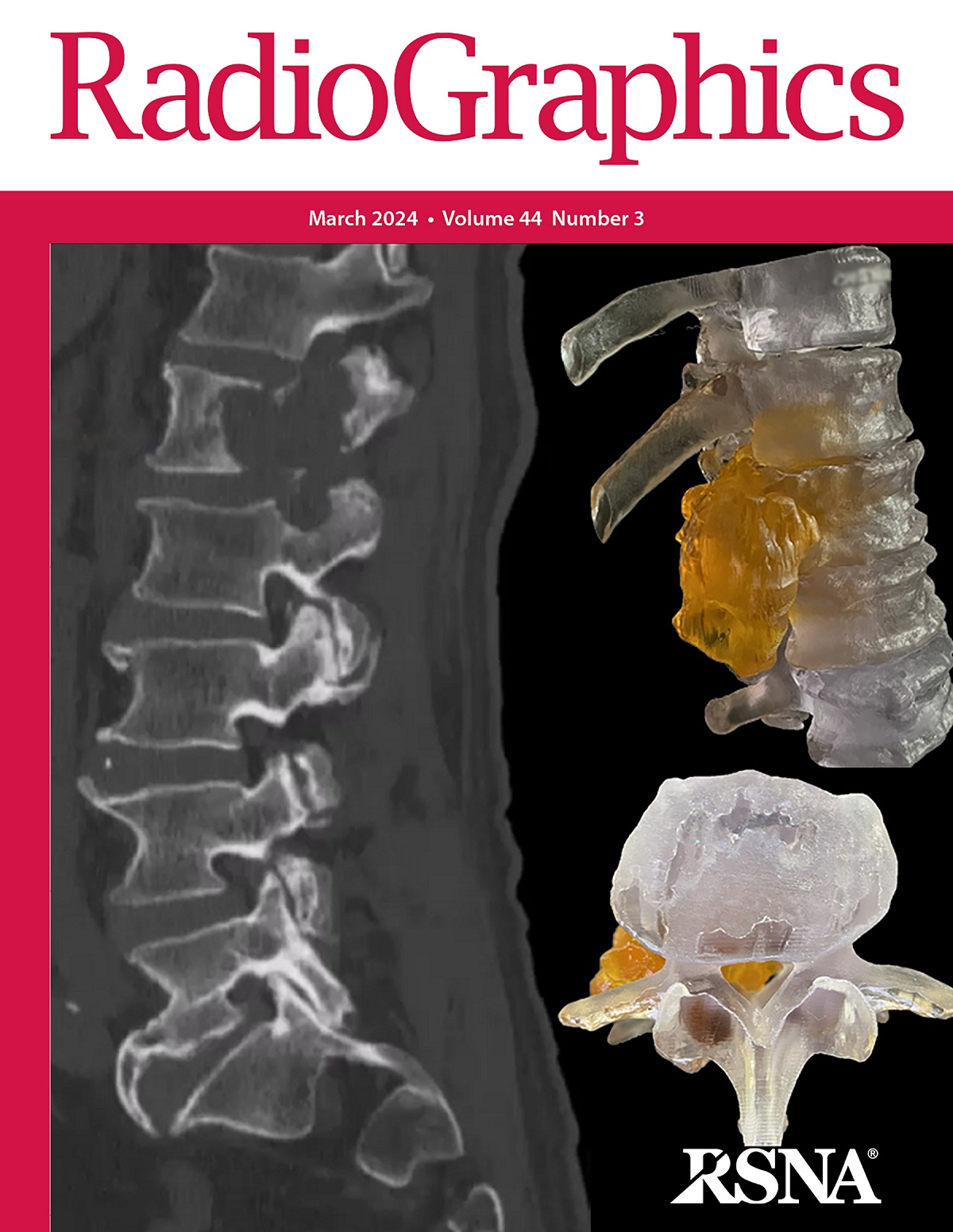Contrast-enhanced US in Renal Transplant Complications: Overview and Imaging Features.
Tomás Fernández, Carmen Sebastià, Blanca Paño, Daniel Corominas Muñoz, Daniel Vas, Carmen García-Roch, Ignacio Revuelta, Mireia Musquera, Fernando García, Carlos Nicolau
求助PDF
{"title":"Contrast-enhanced US in Renal Transplant Complications: Overview and Imaging Features.","authors":"Tomás Fernández, Carmen Sebastià, Blanca Paño, Daniel Corominas Muñoz, Daniel Vas, Carmen García-Roch, Ignacio Revuelta, Mireia Musquera, Fernando García, Carlos Nicolau","doi":"10.1148/rg.230182","DOIUrl":null,"url":null,"abstract":"<p><p>Renal transplant is the first-line treatment of end-stage renal disease. The increasing number of transplants performed every year has led to a larger population of transplant patients. Complications may arise during the perioperative and postoperative periods, and imaging plays a key role in this scenario. Contrast-enhanced US (CEUS) is a safe tool that adds additional value to US. Contrast agents are usually administered intravenously, but urinary tract anatomy and complications such as stenosis or leak can be studied using intracavitary administration of contrast agents. Assessment of the graft and iliac vessels with CEUS is particularly helpful in identifying vascular and parenchymal complications, such as arterial or venous thrombosis and stenosis, acute tubular injury, or cortical necrosis, which can lead to graft loss. Furthermore, infectious and malignant graft involvement can be accurately studied with CEUS, which can help in detection of renal abscesses and in the differentiation between benign and malignant disease. CEUS is also useful in interventional procedures, helping to guide percutaneous aspiration of collections with better delimitation of the graft boundaries and to guide renal graft biopsies by avoiding avascular areas. Potential postprocedural vascular complications, such as pseudoaneurysm, arteriovenous fistula, or active bleeding, are identified with CEUS. In addition, newer quantification tools such as CEUS perfusion are promising, but further studies are needed to approve its use for clinical purposes. <sup>©</sup>RSNA, 2024 Supplemental material is available for this article.</p>","PeriodicalId":54512,"journal":{"name":"Radiographics","volume":"44 6","pages":"e230182"},"PeriodicalIF":5.5000,"publicationDate":"2024-06-01","publicationTypes":"Journal Article","fieldsOfStudy":null,"isOpenAccess":false,"openAccessPdf":"","citationCount":"0","resultStr":null,"platform":"Semanticscholar","paperid":null,"PeriodicalName":"Radiographics","FirstCategoryId":"3","ListUrlMain":"https://doi.org/10.1148/rg.230182","RegionNum":1,"RegionCategory":"医学","ArticlePicture":[],"TitleCN":null,"AbstractTextCN":null,"PMCID":null,"EPubDate":"","PubModel":"","JCR":"Q1","JCRName":"RADIOLOGY, NUCLEAR MEDICINE & MEDICAL IMAGING","Score":null,"Total":0}
引用次数: 0
引用
批量引用
Abstract
Renal transplant is the first-line treatment of end-stage renal disease. The increasing number of transplants performed every year has led to a larger population of transplant patients. Complications may arise during the perioperative and postoperative periods, and imaging plays a key role in this scenario. Contrast-enhanced US (CEUS) is a safe tool that adds additional value to US. Contrast agents are usually administered intravenously, but urinary tract anatomy and complications such as stenosis or leak can be studied using intracavitary administration of contrast agents. Assessment of the graft and iliac vessels with CEUS is particularly helpful in identifying vascular and parenchymal complications, such as arterial or venous thrombosis and stenosis, acute tubular injury, or cortical necrosis, which can lead to graft loss. Furthermore, infectious and malignant graft involvement can be accurately studied with CEUS, which can help in detection of renal abscesses and in the differentiation between benign and malignant disease. CEUS is also useful in interventional procedures, helping to guide percutaneous aspiration of collections with better delimitation of the graft boundaries and to guide renal graft biopsies by avoiding avascular areas. Potential postprocedural vascular complications, such as pseudoaneurysm, arteriovenous fistula, or active bleeding, are identified with CEUS. In addition, newer quantification tools such as CEUS perfusion are promising, but further studies are needed to approve its use for clinical purposes. © RSNA, 2024 Supplemental material is available for this article.


